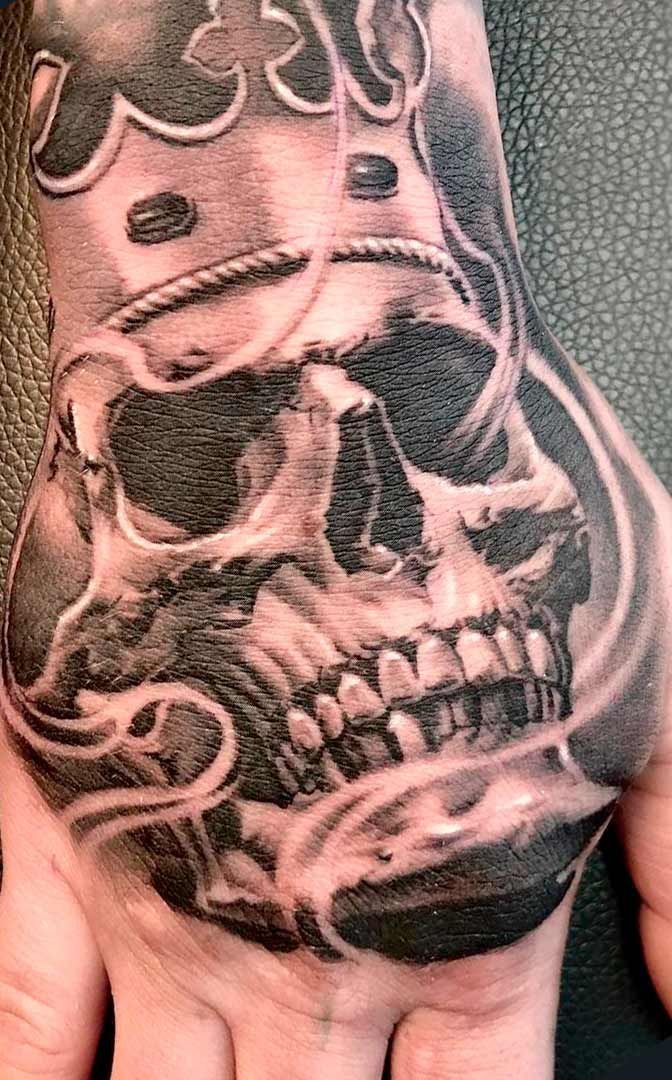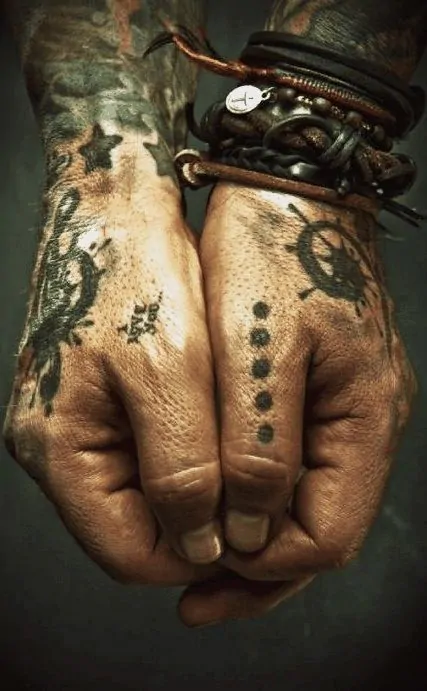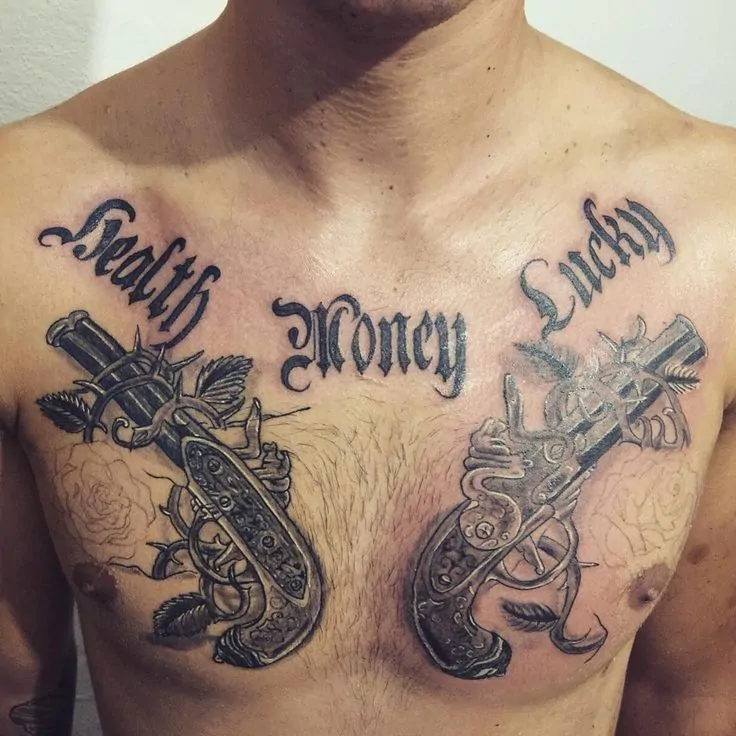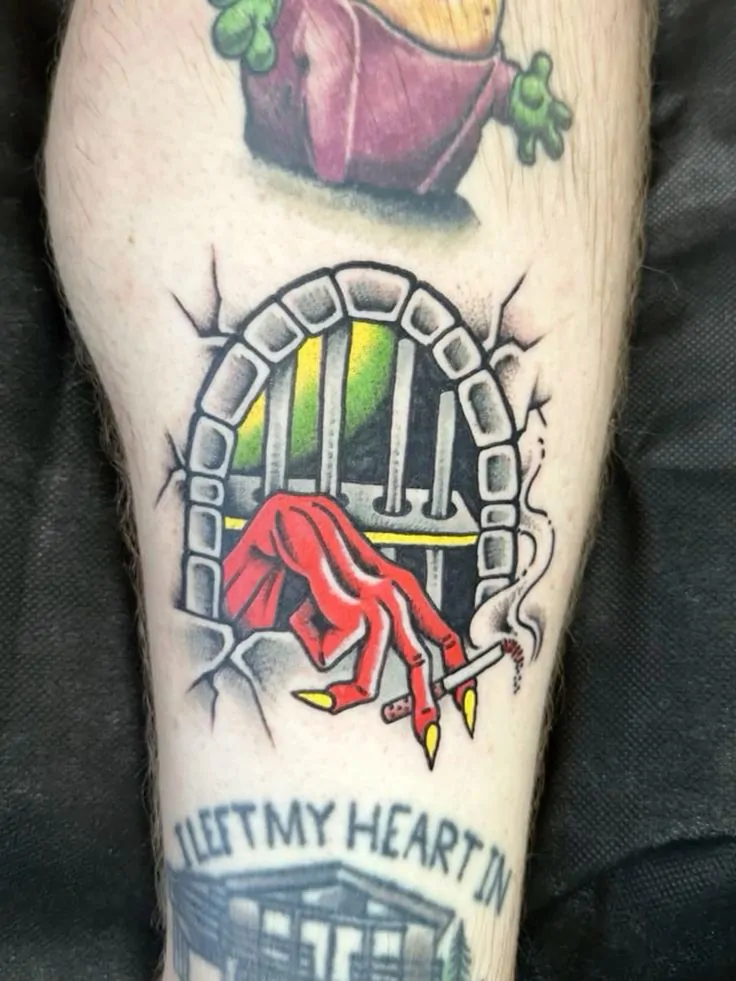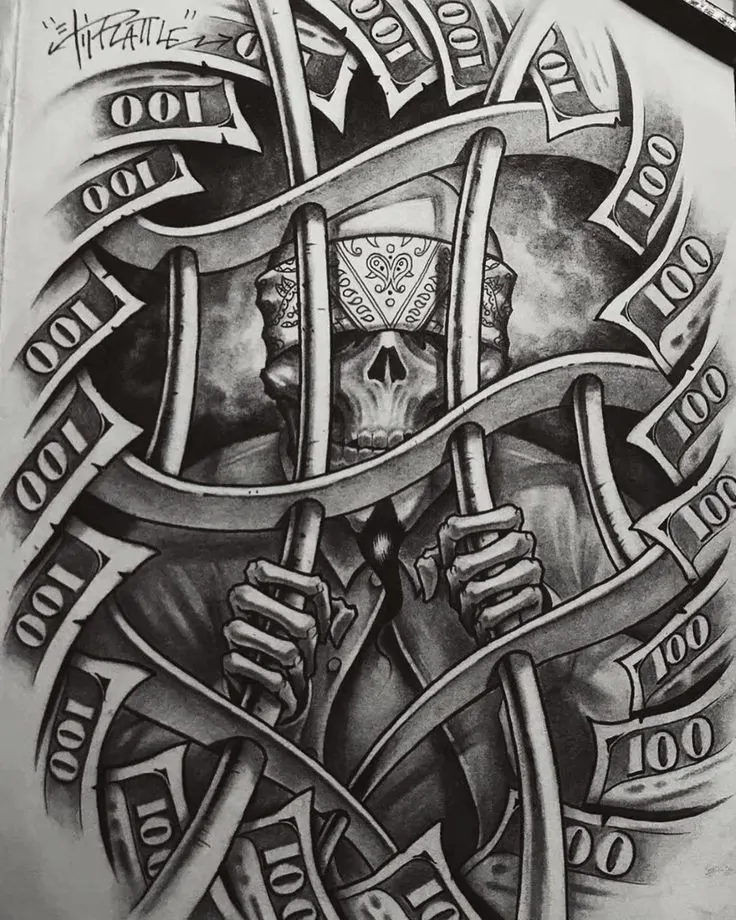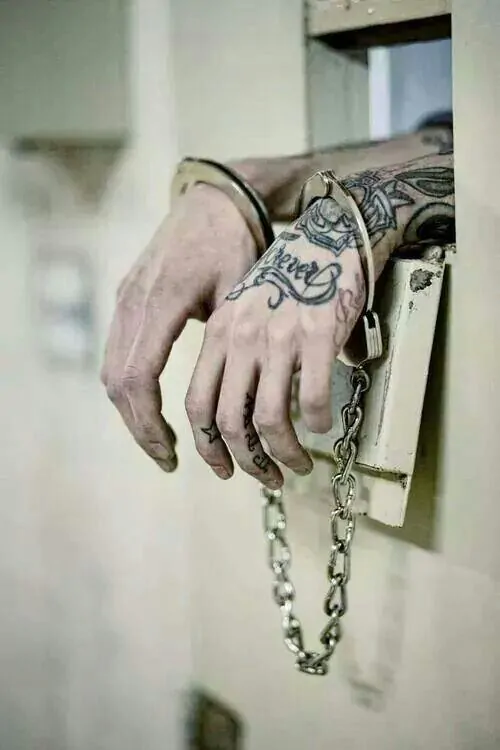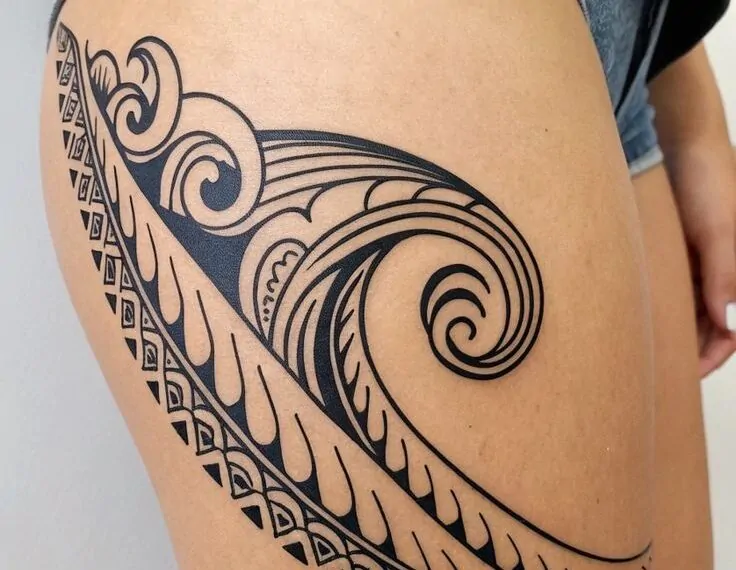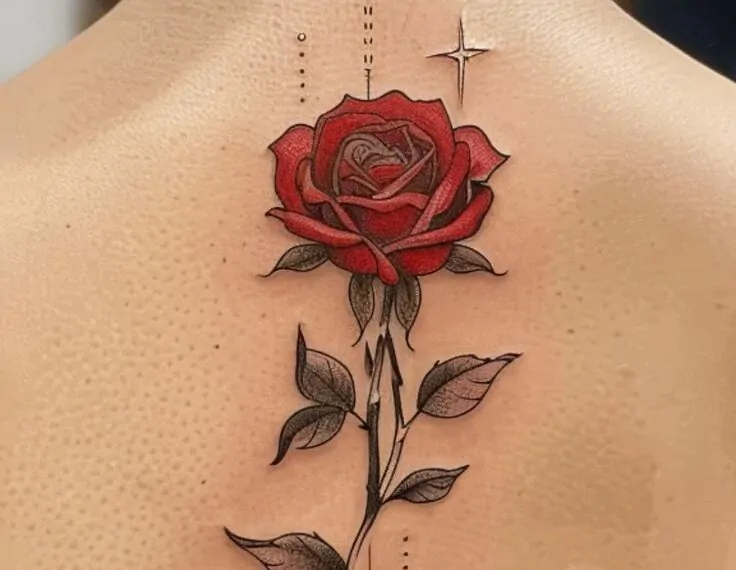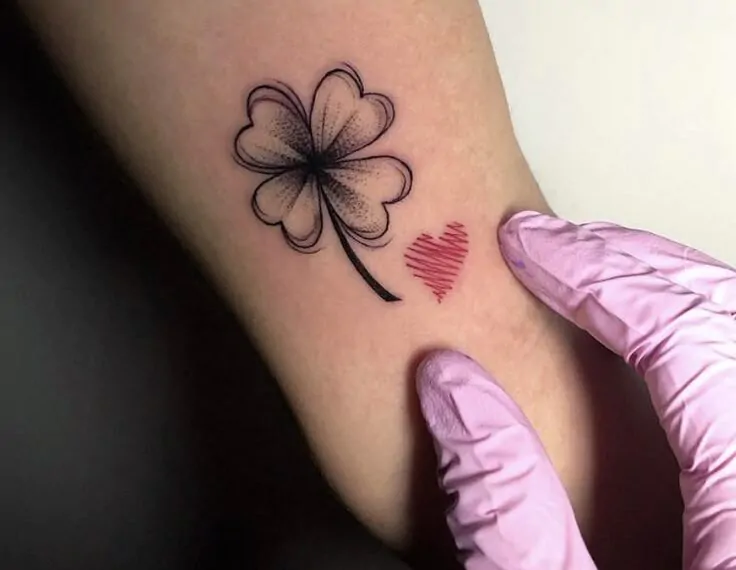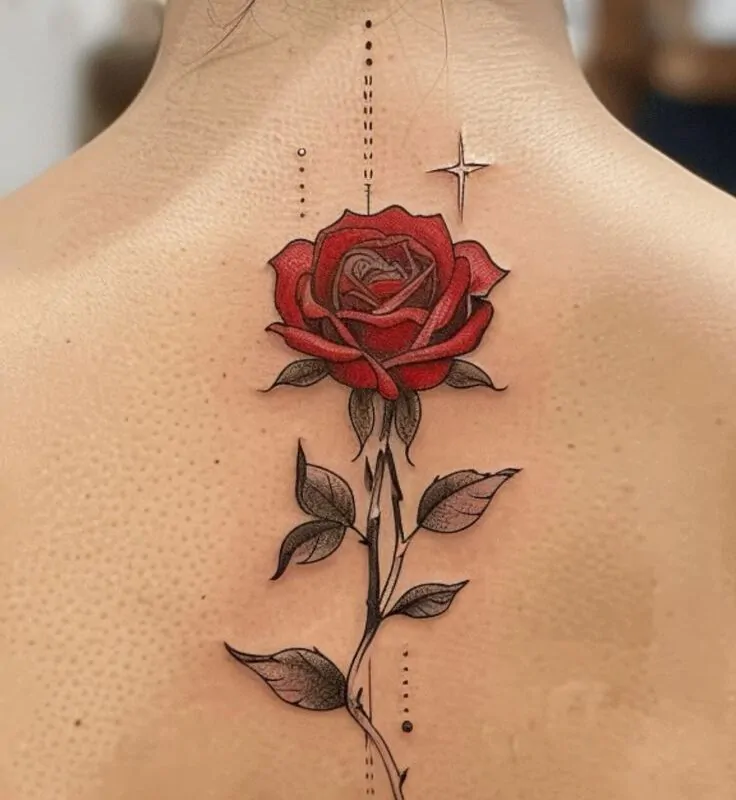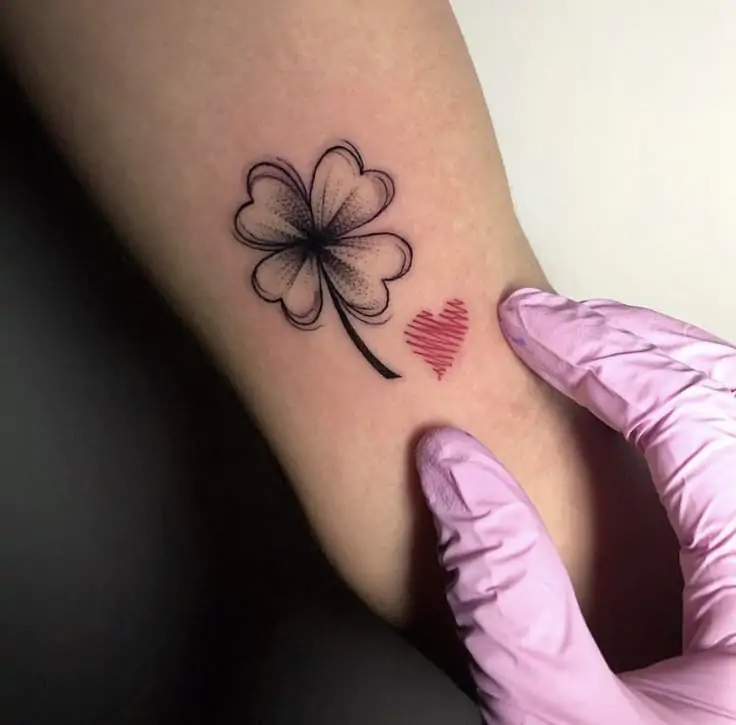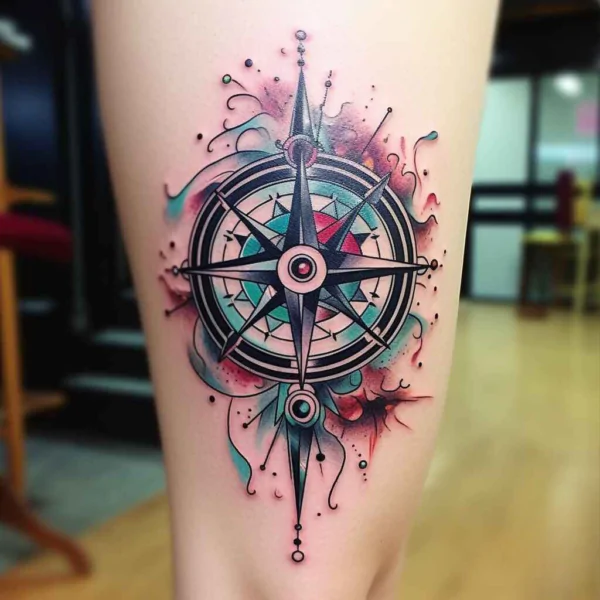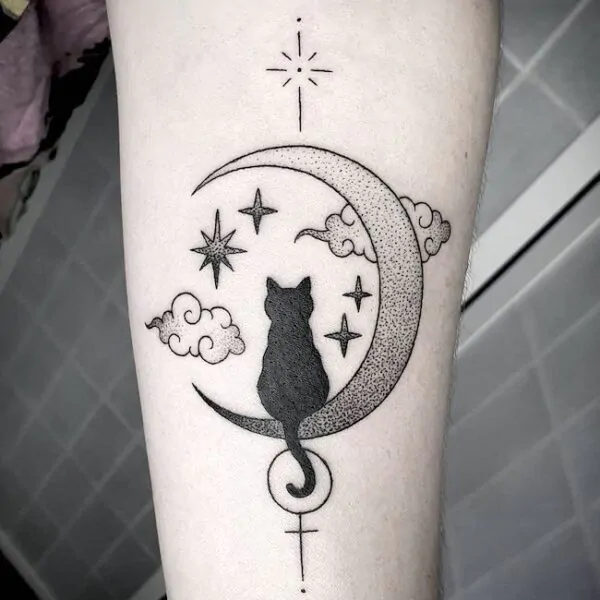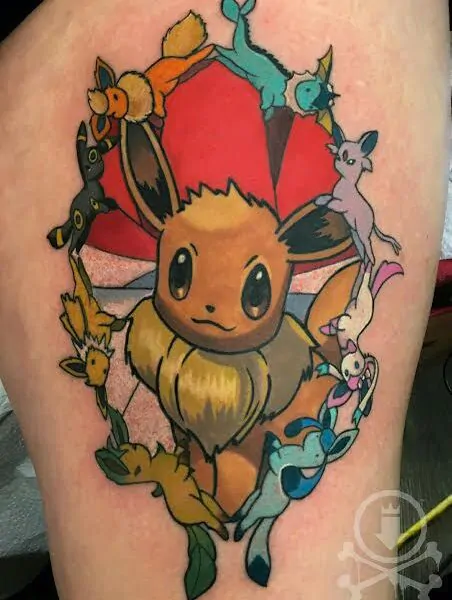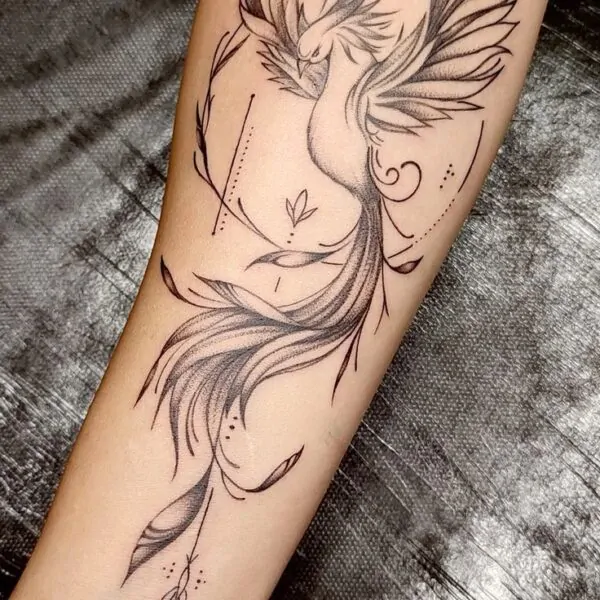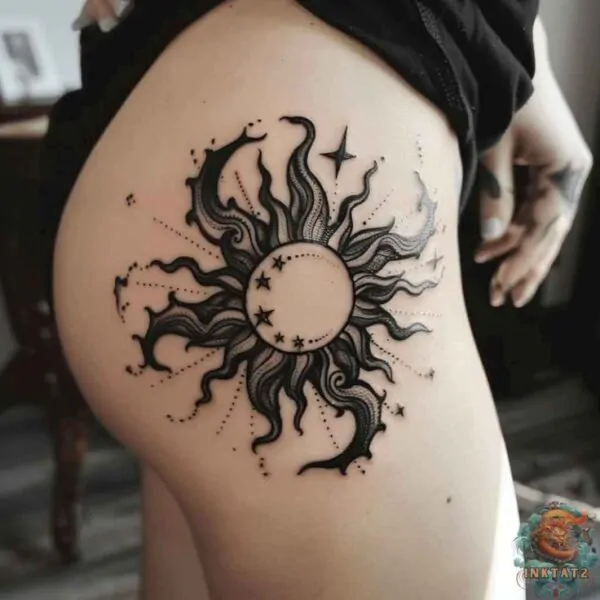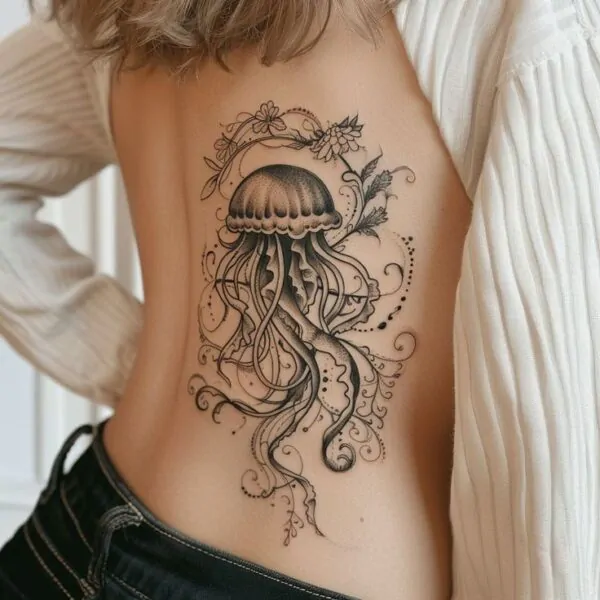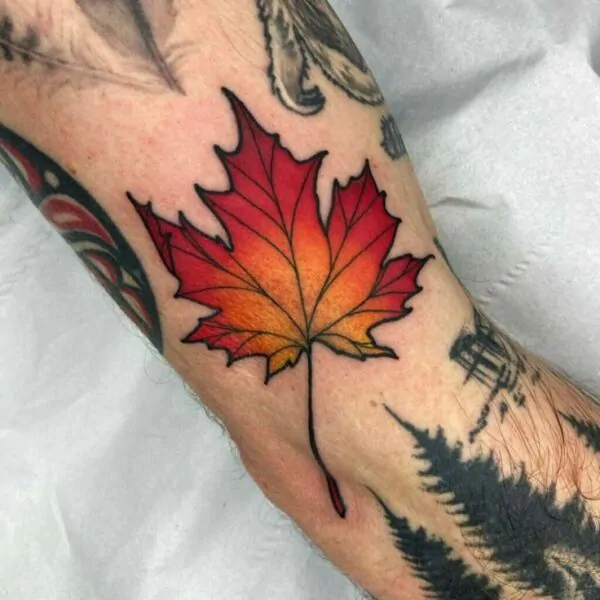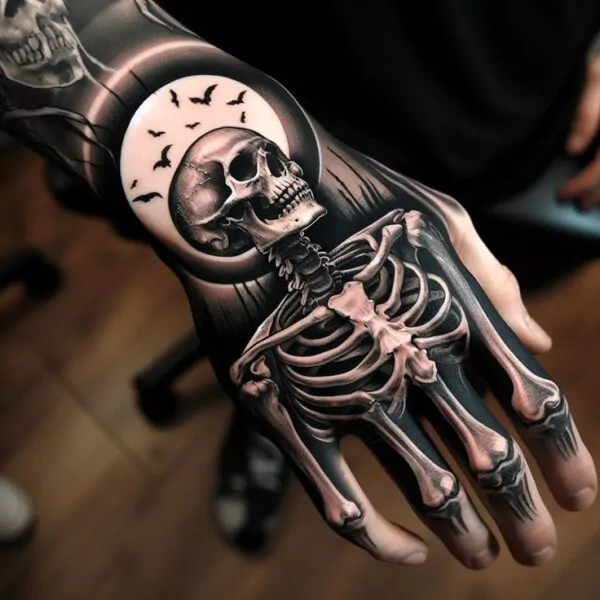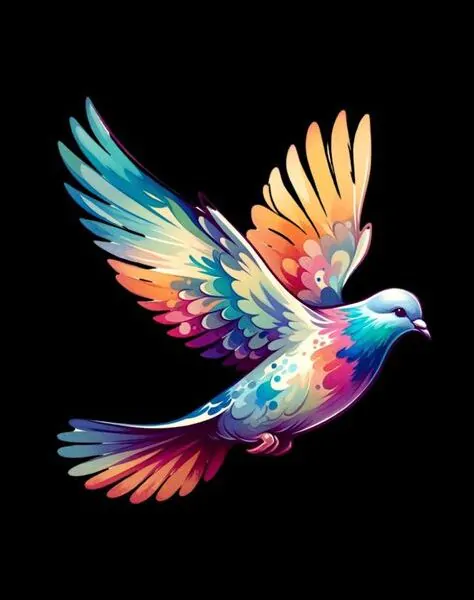What if every tattoo on an inmate told a story deeper than just looks? Asking “What Are Prison Tattoo Meanings?” shows us the deep world of prison tattoos. These tattoos are more than just art; they’re symbols of a person’s life, beliefs, and past.
Prison tattoos have secret meanings behind prison ink. They tell us about the person’s experiences and who they are. They’re like a secret language, showing their background and beliefs.
Looking into symbolic tattoos on inmates, we see their identities and the rules they live by. We’ll see how these inmate tattoos act as a way to communicate. They send messages within the prison’s unique culture. Knowing what these symbols mean is key to understanding prison life and safety.
Introduction to Prison Tattoos
Tattoos in prisons have a long history that goes beyond looks. They were once seen as signs of crime but now are key to tattoo culture. These tattoos let inmates express themselves, telling stories of survival and loyalty through their bodies.
Prison tattoos mean more than regular tattoos. They can show a person’s social rank, gang ties, or how long they’ve been in. For inmates, these tattoos are a big part of who they are. They connect them with others and tell their personal stories.
“Tattoos in prison are not just art; they represent life stories and unspoken codes.”
Learning about prison tattoos helps us see prison life in a new way. It shows the deep meanings behind what outsiders might see as just body art. As tattoo culture grows, it shows how important tattoos are to those in the criminal justice system.
What Are Prison Tattoo Meanings?
Tattoos in prison have deep meanings that go beyond looks. They tell personal stories and reflect on experiences and groups. Inmates pick designs that send a message or highlight parts of their lives. These tattoos can show strength, remember losses, or link to crime, acting as a visual bio in prison.
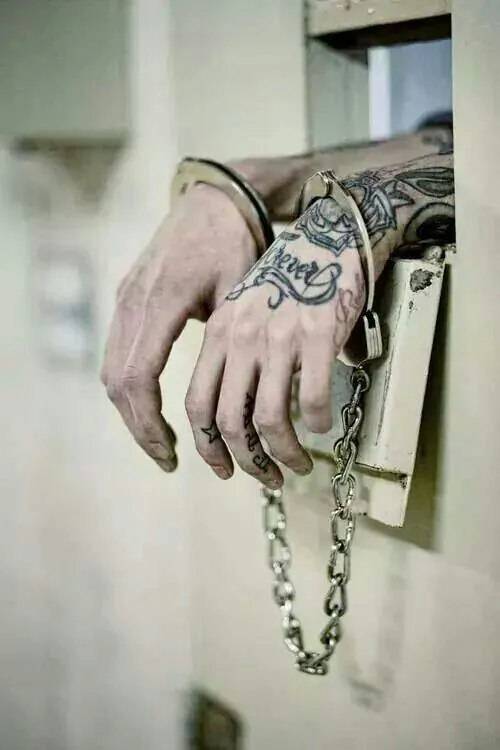
Overview of Tattoo Symbolism in Prison
In prisons, tattoos tell complex stories. Each design has special meaning for the wearer. Symbols can mean violence, time in prison, or personal wins. These tattoos help inmates connect, sharing their stories and understanding each other’s lives.
Societal Perception of Prison Tattoos
People often see prison tattoos as signs of crime. This view links tattoos to a life of wrongdoing. Even as attitudes change, tattoos still bring a certain image. Knowing prison tattoo meanings helps us see how they affect people’s lives and views.
The Teardrop Tattoo
The teardrop tattoo is a powerful symbol in prison tattoos. It tells deep stories of the wearer’s life. The meaning changes with the location, showing how prison life varies across places.
Variations of Meaning Based on Geography
The meaning of a teardrop tattoo changes with the region. In some places, a full teardrop means the wearer has committed murder. An empty teardrop might mean they plan to murder or want revenge. These differences show how prison culture and beliefs differ in various areas.
Association with Violence
Even with its specific meanings, the teardrop tattoo is linked to violence. It often marks a person’s rough and possibly risky past. In prison, it brings a mix of fear and respect from others. The teardrop tells stories of loss, revenge, or a criminal past, making it a strong symbol in prison culture.
Common Symbols Found in Prison Tattoos
Prison tattoos are full of meaning. They feature symbols that show the lives and values of inmates. These symbols mark identity, social status, and personal history in prison.
The cobweb symbolizes long prison sentences, showing a feeling of being trapped. The five dots mean being confined, while three dots link to gang life. These designs tell of inmates’ experiences and groups they belong to.
Barbed wire tattoos mean a life sentence, reminding inmates of their long stay. Gang symbols like the Five-point Crown or gang initials show the complex social life in prison. These tattoos reveal the deep connections among inmates.
These symbols give us a peek into the world of inmates. They tell stories that words can’t. Each tattoo shapes an inmate’s identity, showing how art impacts even in harsh places.
Gang Affiliation and Tattoos
Gang affiliation deeply influences tattoo culture in prisons. These tattoos show loyalty and connect people to specific gangs. They prove a person’s loyalty and their place among others. This helps us understand the strong bonds in these places.
Significance of Gangs in Tattoo Culture
Tattoos linked to gangs tell the story of a member’s life. They show the values and experiences of the wearer. Each tattoo has its own meaning, showing the sacrifices made for the gang and the identity gained.
In tough places, these tattoos are key to showing commitment and rank. They let members share their loyalty and status.
Examples of Gang-Inspired Tattoos
Some tattoos are linked to certain gangs. The Five-point Crown, for example, is for the Latin Kings and shows honor. Symbols like La Eme are for the Mexican Mafia, telling stories of loyalty and rivalry.
These tattoos are more than just body art. They’re a way to show identity and unity in gang culture.
The Importance of Hidden Messages in Tattoos
Tattoos often carry hidden messages that act as a secret language for inmates. These messages let people share feelings they can’t say out loud. They tell about their past, fears, dreams, or warn others in their world.
Having lots of tattoos might mean someone is well-connected in prison. Certain symbols have deep symbolic meanings. For example, a clock with no hands could mean a long sentence or feeling stuck in time.
Knowing these hidden messages helps inmates deal with prison life. Figuring out prison tattoos shows their personal stories. It also shows how inmates communicate with each other. Each tattoo is a sign of the tough times and stories of those who get them.
Prison Tattoo Categories
Prison tattoos show different styles that reflect the unique identities and beliefs of their owners. They capture the historical value of traditional tattoos and the changing nature of modern ones. These changes often bring in new cultural influences.
Traditional Tattoos versus Modern Variations
Traditional prison tattoos use basic tools and black ink for simple yet meaningful designs. They tell stories about an inmate’s life, who they know, and their personal journey. On the other hand, modern tattoos have become more complex with new techniques and colors.
Inmates now use these new methods to express themselves more fully in their tough surroundings. This has led to tattoos with bright colors and detailed designs.
Religious and Cultural Influences
Many prison tattoos come from religious beliefs, featuring symbols like crosses or angels. These symbols show faith and spirituality. The mix of different cultures in prisons creates a rich variety of tattoo meanings.
Inmates blend their tattoos with elements from their heritage. This mix of old and new art forms adds depth to prison tattoo categories. It shows how cultural influences and personal stories come together in tattoos.
Prison Tattoo Styles and Techniques
Prison tattoos show off many unique styles and techniques. These reflect the tough life and experiences of inmates. Artists often use hand-poked methods with tools made from everyday items. This leads to designs that look raw and unique.
Many tattoos in prison feature tribal patterns and bold letters. These symbols hold deep meaning for the wearer. They connect people to their past or experiences. The making of these tattoos is a way for inmates to express themselves and find their place in prison.
The methods used in these tattoos show the creativity and strength of those who make them. It’s not just about the art. It’s about the stories and meanings behind each tattoo. These tattoos are a powerful way for inmates to show who they are.
Consequences of Tattoos in the Prison System
Tattoos in prison have big effects on both the social life and personal experiences of inmates. They shape how prisoners interact with each other and how they are judged by their body art.
Impact on Prisoner Relationships
Tattoos change how inmates connect with each other. Some tattoos help form strong bonds, showing unity among inmates with similar designs. But, they can also cause fights or divide people.
Inmates with certain tattoos might gain respect and admiration. Others might be shunned or face hostility. This shows how tattoos can deeply affect prisoner relationships.
Judgments Made by Tattoo Choices
Tattoos play a big role in how inmates are seen in prison. Their choices can change how they are treated by others. For example, tattoos linked to gangs can keep inmates apart from others.
This shows how important it is to understand the meaning behind tattoos in prison. It helps inmates navigate the complex social world they live in.
Barriers to Understanding Prison Tattoos
Prison tattoos carry deep meanings but are often misunderstood. They tell stories linked to personal or cultural backgrounds. Without knowledge, people may misjudge their importance in prison tattoo culture.
Tattoos are also shrouded in stigma. This stigma can lead to wrong assumptions about those with tattoos. It makes it hard to truly understand why they got them. To really get what prison tattoos mean, we must break through these barriers and see the full picture.
“Each tattoo embodies a part of an individual’s journey, but interpretations can often stray far from the truth.”
It’s crucial to overcome these barriers to build empathy and show the true nature of prison tattoos. By understanding their significance, we can see how they express survival, resistance, or belonging.
Notorious Prison Tattoos Around the World
Prison tattoos are found in many cultures, each with its own story. In Russia, they show a complex social order. The Crown tattoo means a person is highly respected in prison, showing power and respect.
In the U.S., prison tattoos often link to gangs. Symbols like the spider web or teardrop mark gang ties. These tattoos help show who belongs to what group and how they fit into the prison world.
These tattoos are important for inmates’ identity, both as individuals and as a group. They carry deep meanings, telling of struggles, loyalty, and cultural stories. They give us a peek into the lives of prisoners and the global tattoo culture that keeps changing.
FAQ
What do prison tattoos symbolize?
Prison tattoos are more than just body art. They tell stories of personal experiences, beliefs, and group ties. They act as a way to show identity and status among inmates. Each tattoo has its own special meaning tied to the wearer’s prison history.
How are prison tattoos perceived by society?
Society often links prison tattoos with crime and bad behavior. But as tattoos become more common, views are changing. Still, tattoos still carry a stigma, especially for those who have them.
What is the meaning of the teardrop tattoo?
The teardrop tattoo means different things in different places. A full teardrop can mean a person has committed murder. An outline might mean they wanted to or were seeking revenge. It’s often seen as a sign of a violent past.
What are some common symbols found in prison tattoos?
Inmates often get tattoos of cobwebs, which mean they’ve been in for a long time. Five dots can mean they’re in prison. Gang symbols are also common, showing where someone stands in the prison world.
How do gang affiliations influence prison tattoos?
Gangs play a big role in prison tattoos. They help define a person’s loyalty and status. These tattoos show off a person’s values and gang history.
What are hidden messages in prison tattoos?
Prison tattoos can have secret messages. These symbols and designs talk about inmates’ feelings, fears, and dreams. Understanding these messages helps inmates connect and navigate prison life.
How do traditional and modern prison tattoos differ?
Old-school prison tattoos were simple, made with basic tools and black ink. Now, they’re more complex, with new designs and colors. This change reflects outside trends.
What impact do tattoos have on prisoner relationships?
Tattoos can bring inmates together or cause conflict. Some tattoos gain respect, while others might lead to isolation. This affects how inmates see each other in prison.
What barriers exist to understanding prison tattoos?
Not knowing what prison tattoos mean is a big barrier. There’s also a stigma around tattoos. To truly get prison tattoos, you need to understand their cultural and personal significance.
Can you provide examples of notorious prison tattoos around the world?
Prison tattoos vary by country. In Russia, they show complex social ranks, like the Crown symbol for high status. In the U.S., they often show gang ties and criminal history.

Passionate about tattoos and their profound meanings. My blog is dedicated to exploring the stories and symbolism behind body art. Each tattoo tells a unique story, and my goal is to share these fascinating narratives with my readers.

